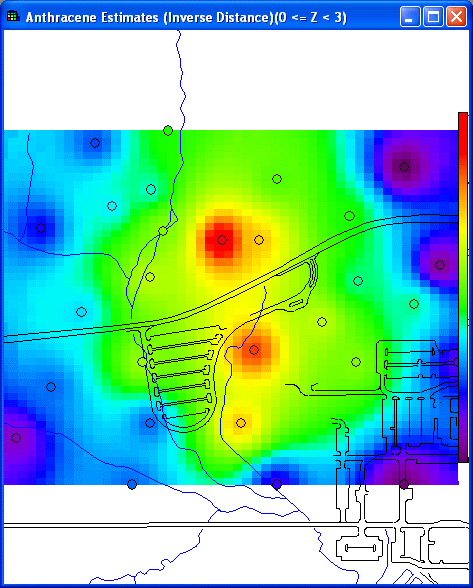
Inverse Distance is a simple interpolant that can often yield satisfactory results. The basic premise of inverse distance is that data points are weighted by the inverse of their distance to the estimation point. This approach has the effect of giving more influence to nearby data points than those farther away. Additionally, the inverted distance weight can be raised to further reduce the effect of data points located farther away. This approach is mathematically expressed as:

where v0 is the estimated concentration at (x0, y0, z0), vi is a neighboring data value at (xi, yi, zi), DI is the distance between (x0,y0,z0) and (xi,yi,zi), P is the power, and N(v0) is the number of data points in the neighborhood of v0.
To utilize Inverse Distance, select Inverse Distance from the Parameters Window when the Interpolation methods step is selected. This interpolation method requires that a grid and search neighborhood be defined first.
Then, press Show the results on the Steps Window to display the applicable result in the Graphics Window.
The following image shows an estimates map (for the Interpolate my data interview) for Anthracene.
